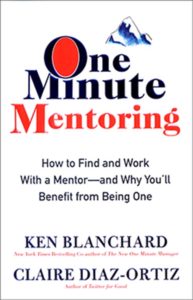
As Silicon Valley Eyes Latin America, it’s Critical for Latin American Founders to Understand What Outside Investors Can Offer – and What They Can’t
Silicon Valley has a long history of knowing little about Latin America.
Ask me how I know.
When I left my home state of California to study abroad in Chile twenty years ago, my privileged, well-educated Stanford classmates and I traveled all over that tall, skinny country every weekend. After a few months, we were exhausted. It was only then that we pulled out a map and realized that the weekend trips we had been booking on overnight buses right and left were actually all to places that were really freaking far away. Kilometers, it turned out, where not as small as they were purported to be. Taking an overnight bus from San Francisco to Utah and then back to San Francisco and then to Atlanta and then back to San Francisco and then on to Minnesota on three consecutive weekends would tire any one out.
I never said I majored in geography. When I first joined Twitter in 2009 in San Francisco, I was finishing an MBA in England, my soon-to-be-husband was living in Argentina, and I was doing a hell of a lot of flying. Whenever I happened to be in the lone Twitter office on Brannon Street, I would inevitably end up in a conversation with a fellow early employee (who was in the statistically privileged positioned to one day become a top valley operator or deal-maker) that touched on the fact that no, I had still not been in Brazil, and that no, they still didn’t speak Spanish in Brazil anyway.
It’s not like I can blame them. It wasn’t until I was already living in South America that I learned that Guyana is not in Africa — another continent I had also already lived and worked on, incidentally.
Sadly, in our globalized world, this doesn’t go both ways. In Guyana, or Argentina, or Brazil, the average citizen is likely to know many things about US news, politics, celebrities, and business and to regularly follow information, updates, and current events. Oftentimes more so than US citizens or residents even do.
And therein lies the problem.
In a closed-door industry like venture capital, where the power imbalance is already tipped so in favor of the investor 99% of the time, a Latin American founder must appropriately analyze the risks and benefits of bringing on a Silicon Valley investor. That’s because a key potential problem with Silicon Valley funds entering new ecosystems like Latin America in droves is that a Latin American founder may be so dazzled by a big name or a big check that he or she doesn’t appropriately evaluate how much the potential investor knows about the region and whether or not it really matters. Especially when great funds, some with billions under management – Kaszek, Monashees, Valor, Canary, AllVP – are already here.
A Founder-Friendly Public Service Announcement in Light of Latin America’s VC Boom. This is the number one thing every Latin American founder needs to ask themselves before accepting money from Silicon Valley.
“Is this Strategic? Or is this Just Stupid?”
Any company who has had a McKinsey consultant come in and dramatically turn around their business for the better knows that bringing in someone from the outside can be extremely effective at times. Cross-pollination and info-sponging are two of my favorite strategies in business and investing. Thankfully, these are increasingly actual strategies that global funds – and some global investors – are increasingly relying upon. I am one such investor (it’s no wonder I identify more with my degree in anthropology than my MBA). A few years ago, I became obsessed with women’s consumer banking as the next big trend in verticalized fintech. A mix of eye-opening data and a persistent alter ego as a failed anthropologist had helped me as an investor see that if we’re already funding banks for kids, teens, couples, Black people, Asian people, millennials, and pet lovers – some of which are now valued in the billions – why wouldn’t women be next? I have pursued that obsession in different geographies (Brazil, Mexico, Pakistan), along the way connecting my geographically disparate founders on like-minded rocket-ships like Jefa and Oraan so they can knowledge share all the way to the bank.
Similarly, when I began investing in the relative white space of pre-seed in Latin America, one of my main strategies for some of my pre-seed companies was to drag Hustle Fund into the investment. Hustle Fund had done one Latin American investment at that point, and wanted to do more, but didn’t have much knowledge of the region. I knew they were a great early stage fund with a global perspective and a strong ability to help founders on the growth side. Due to their deals in Asia, they also had a deep understanding of emerging market founders that is unusual in Silicon Valley.
Also, I am really good at bothering people. (Especially those with whom I apparently went to college with, although none of us remembers this.) In the second deal we ever did together, Elizabeth and Shiyan said no to me three times before I convinced them. (Eric was in his minivan, unavailable for comment.) Nevertheless, I persisted. They came in. They helped the company a ton. They got marked up. Bright lights ahead.
But that’s not always what happens.
As an investor, I have also invested as a “tourist” in regions or areas I don’t know anything about and can’t offer much to. Some of these I regret for this reason. For the founder, such an investment may not be a bad thing — if the founder really needs the money, say, or the founder really wants a certain name on the cap table for signaling — but it is always important for the founder to truly understand what they are really getting. Recently, I was trying to get a fancy fintech founder into a seed round in Latin America. When he said he didn’t know anything about Latin America, I said I didn’t care. That wasn’t the expertise we were looking for, and there were a lot of other people in the round with bigger checks to cover that.
The harsh truth is that for many well-positioned Latin American entrepreneurs who have enough shiny points on their resume to be palatable to US investors (Stanford GSB! Y-Combinator! Great English language skills! Probably a dude!), raising a large seed round from a Silicon Valley fund in a hot market like this can sometimes get you lots of money without lots of questions.
But then what?
Ultimately, every founder must understand and be honest with themselves about the role of each investor on their cap table – as a lead investor, a following check, an angel check, an angel/advisor, a signal on a cap table, or something else.
If you are a founder from Latin America – or any ecosystem where the big Silicon Valley guys are now headed – never forget to ask yourself, “Is this a strategic check? Or is this just stupid?”
If you are a founder from Latin America – or any ecosystem where the big Silicon Valley guys are now headed – never forget to ask yourself, “Is this a strategic check? Or is this just stupid?”




